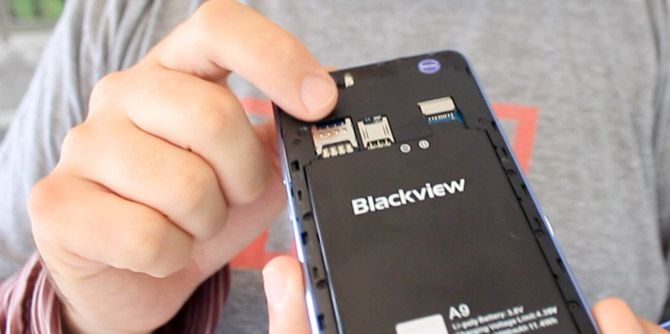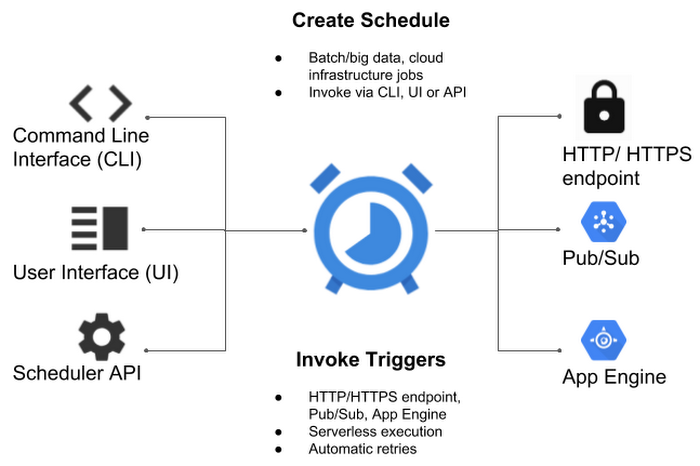The holiday season is here again, touting all sorts of kids’ toys that pledge to pack ‘STEM smarts’ in the box, not just the usual battery-based fun.
Educational playthings are nothing new, of course. But, in recent years, long time toymakers and a flurry of new market entrants have piggybacked on the popularity of smartphones and apps, building connected toys for even very young kids that seek to tap into a wider ‘learn to code’ movement which itself feeds off worries about the future employability of those lacking techie skills.
Whether the lofty educational claims being made for some of these STEM gizmos stands the test of time remains to be seen. Much of this sums to clever branding. Though there’s no doubt a lot of care and attention has gone into building this category out, you’ll also find equally eye-catching price-tags.
Whatever STEM toy you buy there’s a high chance it won’t survive the fickle attention spans of kids at rest and play. (Even as your children’s appetite to be schooled while having fun might dash your ‘engineer in training’ expectations.) Tearing impressionable eyeballs away from YouTube or mobile games might be your main parental challenge — and whether kids really need to start ‘learning to code’ aged just 4 or 5 seems questionable.
Buyers with high ‘outcome’ hopes for STEM toys should certainly go in with their eyes, rather than their wallets, wide open. The ‘STEM premium’ can be steep indeed, even as the capabilities and educational potential of the playthings themselves varies considerably.
At the cheaper end of the price spectrum, a ‘developmental toy’ might not really be so very different from a more basic or traditional building block type toy used in concert with a kid’s own imagination, for example.
While, at the premium end, there are a few devices in the market that are essentially fully fledged computers — but with a child-friendly layer applied to hand-hold and gamify STEM learning. An alternative investment in your child’s future might be to commit to advancing their learning opportunities yourself, using whatever computing devices you already have at home. (There are plenty of standalone apps offering guided coding lessons, for example. And tons and tons of open source resources.)
For a little DIY STEM learning inspiration read this wonderful childhood memoir by TechCrunch’s very own John Biggs — a self-confessed STEM toy sceptic.
It’s also worth noting that some startups in this still youthful category have already pivoted more toward selling wares direct to schools — aiming to plug learning gadgets into formal curricula, rather than risking the toys falling out of favor at home. Which does lend weight to the idea that standalone ‘play to learn’ toys don’t necessarily live up to the hype. And are getting tossed under the sofa after a few days’ use.
We certainly don’t suggest there are any shortcuts to turn kids into coders in the gift ideas presented here. It’s through proper guidance — plus the power of their imagination — that the vast majority of children learn. And of course kids are individuals, with their own ideas about what they want to do and become.
The increasingly commercialized rush towards STEM toys, with hundreds of millions of investor dollars being poured into the category, might also be a cause for parental caution. There’s a risk of barriers being thrown up to more freeform learning — if companies start pushing harder to hold onto kids’ attention in a more and more competitive market. Barriers that could end up dampening creative thinking.
At the same time (adult) consumers are becoming concerned about how much time they spend online and on screens. So pushing kids to get plugged in from a very early age might not feel like the right thing to do. Your parental priorities might be more focused on making sure they develop into well rounded human beings — by playing with other kids and/or non-digital toys that help them get to know and understand the world around them, and encourage using more of their own imagination.
But for those fixed on buying into the STEM toy craze this holiday season, we’ve compiled a list of some of the main players, presented in alphabetical order, rounding up a selection of what they’re offering for 2018, hitting a variety of price-points, product types and age ranges, to present a market overview — and with the hope that a well chosen gift might at least spark a few bright ideas…
Adafruit Kits

Product: Metro 328 Starter Pack
Price: $45
Description: Not a typical STEM toy but a starter kit from maker-focused and electronics hobbyist brand Adafruit. The kit is intended to get the user learning about electronics and Arduino microcontrollers to set them on a path to being a maker. Adafruit says the kit is designed for “everyone, even people with little or no electronics and programming experience”. Though parental supervision is a must unless you’re buying for a teenager or mature older child. Computer access is also required for programming the Arduino.
Be sure to check out Adafruit’s Young Engineers Category for a wider range of hardware hacking gift ideas too, from $10 for a Bare Conductive Paint Pen, to $25 for the Drawdio fun pack, to $35 for this Konstruktor DIY Film Camera Kit or $75 for the Snap Circuits Green kit — where budding makers can learn about renewable energy sources by building a range of solar and kinetic energy powered projects. Adafruit also sells a selection of STEM focused children’s books too, such as Python for Kids ($35)
Age: Teenagers, or younger children with parental supervision
[inline-ads]
Anki

Product: Cozmo
Price: $180
Description: The animation loving Anki team added a learn-to-code layer to their cute, desktop-mapping bot last year — called Cozmo Code Lab, which was delivered via free update — so the cartoonesque, programmable truck is not new on the scene for 2018 but has been gaining fresh powers over the years.
This year the company has turned its attention to adults, launching a new but almost identical-looking assistant-style bot, called Vector, that’s not really aimed at kids. That more pricey ($250) robot is slated to be getting access to its code lab in future, so it should have some DIY programming potential too.
Age: 8+
Dash Robotics

Product: Kamigami Jurassic World Robot
Price: ~$60
Description: Hobbyist robotics startup Dash Robotics has been collaborating with toymaker Mattel on the Kamigami line of biologically inspired robots for over a year now. The USB-charged bots arrive at kids’ homes in build-it-yourself form before coming to programmable, biomimetic life via the use of a simple, icon-based coding interface in the companion app.
The latest addition to the range is dinosaur bot series Jurassic World, currently comprised of a pair of pretty similar looking raptor dinosaurs, each with light up eyes and appropriate sound effects. Using the app kids can complete challenges to unlock new abilities and sounds. And if you have more than one dinosaur in the same house they can react to each other to make things even more lively.
Age: 8+
Kano

Product: Harry Potter Coding Kit
Price: $100
Description: British learn-to-code startup Kano has expanded its line this year with a co-branded, build-it-yourself wand linked to the fictional Harry Potter wizard series. The motion-sensitive e-product features a gyroscope, accelerometer, magnetometer and Bluetooth wireless so kids can use it to interact with coding content on-screen. The company offers 70-plus challenges for children to play wizard with, using wand gestures to manipulate digital content. Like many STEM toys it requires a tablet or desktop computer to work its digital magic (iOS and Android tablets are supported, as well as desktop PCs including Kano’s Computer Kit Touch, below)
Age: 6+

Product: Computer Kit Touch
Price: $280
Description: The latest version of Kano’s build-it-yourself Pi-powered kids’ computer. This year’s computer kit includes the familiar bright orange physical keyboard but now paired with a touchscreen. Kano reckons touch is a natural aid to the drag-and-drop, block-based learn-to-code systems it’s putting under kids’ fingertips here. Although its KanoOS Pi skin does support text-based coding too, and can run a wide range of other apps and programs — making this STEM device a fully fledged computer in its own right
Age: 6-13
Lego

Product: Boost Creative Toolbox
Price: $160
Description: Boost is Lego’s relatively recent foray into offering a simpler robotics and programming system aimed at younger kids vs its more sophisticated and expensive veteran Mindstorms creator platform (for 10+ year olds). The Boost Creative Toolbox is an entry point to Lego + robotics, letting kids build a range of different brick-based bots — all of which can be controlled and programmed via the companion app which offers an icon-based coding system.
Boost components can also be combined with other Lego kits to bring other not-electronic kits to life — such as its Stormbringer Ninjago Dragon kit (sold separately for $40). Ninjago + Boost means = a dragon that can walk and turn its head as if it’s about to breathe fire
Age: 7-12
littleBits

Product: Avengers Hero Inventor Kit
Price: $150
Description: This Disney co-branded wearable in kit form from the hardware hackers over at littleBits lets superhero-inspired kids snap together all sorts of electronic and plastic bits to make their own gauntlet from the Avengers movie franchise. The gizmo features an LED matrix panel, based on Tony Stark’s palm Repulsor Beam, they can control via companion app. There are 18 in-app activities for them to explore, assuming kids don’t just use amuse themselves acting out their Marvel superhero fantasies
Age: 8+
It’s worth noting that littleBits has lots more to offer — so if bringing yet more Disney-branded merch into your home really isn’t your thing, check out its wide range of DIY electronics kits, which cater to various price points, such as this Crawly Creature Kit ($40) or an Electronic Music Inventor Kit ($100), and much more… No major movie franchises necessary
Makeblock

Product: Codey Rocky
Price: $100
Description: Shenzhen-based STEM kit maker Makeblock crowdfunded this emotive, programmable bot geared towards younger kids on Kickstarter. There’s no assembly required, though the bot itself can transform into a wearable or handheld device for game playing, as Codey (the head) detaches from Rocky (the wheeled body).
Despite the young target age, the toy is packed with sophisticated tech — making use of deep learning algorithms, for example. While the company’s visual programming system, mBlock, also supports Python text coding, and allows kids to code bot movements and visual effects on the display, tapping into the 10 programmable modules on this sensor-heavy bot. Makeblock says kids can program Codey to create dot matrix animations, design games and even build AI and IoT applications, thanks to baked in support for voice, image and even face recognition… The bot has also been designed to be compatible with Lego bricks so kids can design and build physical add-ons too
Age: 6+

Product: Airblock
Price: $100
Description: Another programmable gizmo from Makeblock’s range. Airblock is a modular and programmable drone/hovercraft so this is a STEM device that can fly. Magnetic connectors are used for easy assembly of the soft foam pieces. Several different assembly configurations are possible. The companion app’s block-based coding interface is used for programming and controlling your Airblock creations
Age: 8+
Ozobot

Product: Evo
Price: $100
Description: This programmable robot has a twist as it can be controlled without a child always having to be stuck to a screen. The Evo’s sensing system can detect and respond to marks made by marker pens and stickers in the accompanying Experience Pack — so this is coding via paper plus visual cues.
There is also a digital, block-based coding interface for controlling Evo, called OzoBlockly (based on Google’s Blockly system). This has a five-level coding system to support a range of ages, from pre-readers (using just icon-based blocks), up to a ‘Master mode’ which Ozobot says includes extensive low-level control and advanced programming features
Age: 9+
Pi-top

Product: Modular Laptop
Price: $320 (with a Raspberry Pi 3 Model B+), $285 without
Description: This snazzy 14-inch modular laptop, powered by Raspberry Pi, has a special focus on teaching coding and electronics. Slide the laptop’s keyboard forward and it reveals a built in rail for hardware hacking. Guided projects designed for kids include building a music maker and a smart robot. The laptop runs pi-top’s learn-to-code oriented OS — which supports block-based coding programs like Scratch and kid-friendly wares like Minecraft Pi edition, as well as its homebrew CEEDUniverse: A Civilization style game that bakes in visual programming puzzles to teach basic coding concepts. The pi-top also comes with a full software suite of more standard computing apps (including apps from Google and Microsoft). So this is no simple toy. Not a new model for this year — but still a compelling STEM machine
Age: 8+
Robo Wunderkind

Product: Starter Kit
Price: $200
Description: Programmable robotics blocks for even very young inventors. The blocks snap together and are color-coded based on function so as to minimize instruction for the target age group. Kids can program their creations to do stuff like drive, play music, detect obstacles and more via a drag-and-drop coding interface in the companion Robo Code app. Another app — Robo Live — lets them control what they’ve built in real time. The physical blocks can also support Lego-based add-ons for more imaginative designs
Age: 5+
Root Robotics

Product: Root
Price: $200
Description: A robot that can sense and draw, thanks to a variety of on board sensors, battery-powered kinetic energy and its central feature: A built-in pen holder. Root uses spirographs as the medium for teaching STEM as kids get to code what the bot draws. They can also create musical compositions with a scan and play mode that turns Root into a music maker. The companion app offers three levels of coding interfaces to support different learning abilities and ages. At the top end it supports programming in Swift (with Python and JavaScript slated as coming soon). An optional subscription service offers access to additional learning materials and projects to expand Root’s educational value
Age: 4+
Sphero

Product: Bolt
Price: $150
Description: The app-enabled robot ball maker’s latest STEM gizmo. It’s still a transparent sphere but now has an 8×8 LED matrix lodged inside to expand the programmable elements. This colorful matrix can be programmed to display words, show data in real-time and offer game design opportunities. Bolt also includes an ambient light sensor, and speed and direction sensors, giving it an additional power up over earlier models. The Sphero Edu companion app supports drawing, Scratch-style block-based and JavaScript text programming options to suit different ages
Age: 8+
Tech Will Save Us

Product: Range of coding, electronics and craft kits
Price: From ~$30 up to $150
Description: A delightful range of electronic toys and coding kits, hitting various age and price-points, and often making use of traditional craft materials (which of course kids love). Examples include a solar powered moisture sensor kit ($40) to alert when a pot plant needs water; electronic dough ($35); a micro:bot add-on kit ($35) that makes use of the BBC micro:bit device (sold separately); and the creative coder kit ($70), which pairs block-based coding with a wearable that lets kids see their code in action (and reacting to their actions)
Age: 4+, 8+, 11+ depending on kit
UBTech Robotics

Product: JIMU Robot BuilderBots Series: Overdrive Kit
Price: $120
Description: More snap-together, codable robot trucks that kids get to build and control. These can be programmed either via posing and recording, or using Ubtech’s drag-and-drop, block-based Blockly coding program. The Shenzhen-based company, which has been in the STEM game for several years, offers a range of other kits in the same Jimu kit series — such as this similarly priced UnicornBot and its classic MeeBot Kit, which can be expanded via the newer Animal Add-on Kit
Age: 8+
Wonder Workshop

Product: Dot Creativity Kit
Price: $80
Description: San Francisco-based Wonder Workshop offers a kid-friendly blend of controllable robotics and DIY craft-style projects in this entry-level Dot Creativity Kit. Younger kids can play around and personalize the talkative connected device. But the startup sells a trio of chatty robots all aimed at encouraging children to get into coding. Next in line there’s Dash ($150), also for 6+ year olds. Then Cue ($200) for 11+. The startup also has a growing range of accessories to expand the bots’ (programmable) functionality — such as this Sketch Kit ($40) which adds a few arty smarts to Dash or Cue.
With Dot, younger kids play around using a suite of creative apps to control and customize their robot and tap more deeply into its capabilities, with the apps supporting a range of projects and puzzles designed to both entertain them and introduce basic coding concepts
Age: 6+
Read Full Article





























